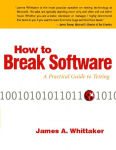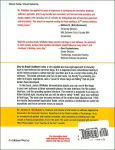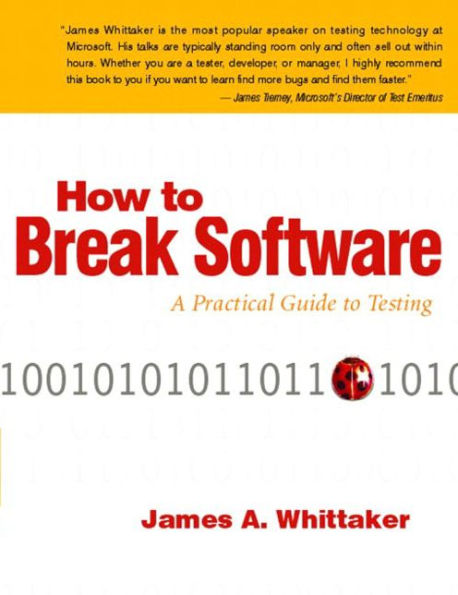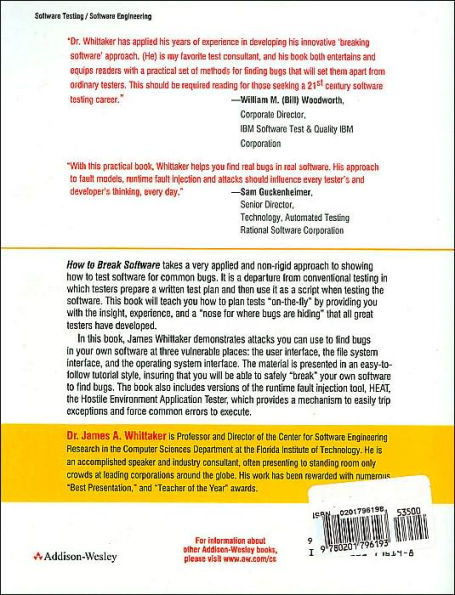How to Break Software: A Practical Guide to Testing
How to Break Software is a departure from conventional testing in which testers prepare a written test plan and then use it as a script when testing the software. The testing techniques in this book are as flexible as conventional testing is rigid. And flexibility is needed in software projects in which requirements can change, bugs can become features and schedule pressures often force plans to be reassessed. Software testing is not such an exact science that one can determine what to test in advance and then execute the plan and be done with it. Instead of a plan, intelligence, insight, experience and a "nose for where the bugs are hiding" should guide testers. This book helps testers develop this insight. The techniques presented in this book not only allow testers to go off-script, they encourage them to do so. Don't blindly follow a document that may be out of date and that was written before the product was even testable. Instead, use your head! Open your eyes! Think a little, test a little and then think a little more. This book does teach planning, but in an "on- the-fly while you are testing" way. It also encourages automation with many repetitive and complex tasks that require good tools (one such tool is shipped with this book on the companion CD). However, tools are never used as a replacement for intelligence. Testers do the thinking and use tools to collect data and help them explore applications more efficiently and effectively.
1112225669
How to Break Software: A Practical Guide to Testing
How to Break Software is a departure from conventional testing in which testers prepare a written test plan and then use it as a script when testing the software. The testing techniques in this book are as flexible as conventional testing is rigid. And flexibility is needed in software projects in which requirements can change, bugs can become features and schedule pressures often force plans to be reassessed. Software testing is not such an exact science that one can determine what to test in advance and then execute the plan and be done with it. Instead of a plan, intelligence, insight, experience and a "nose for where the bugs are hiding" should guide testers. This book helps testers develop this insight. The techniques presented in this book not only allow testers to go off-script, they encourage them to do so. Don't blindly follow a document that may be out of date and that was written before the product was even testable. Instead, use your head! Open your eyes! Think a little, test a little and then think a little more. This book does teach planning, but in an "on- the-fly while you are testing" way. It also encourages automation with many repetitive and complex tasks that require good tools (one such tool is shipped with this book on the companion CD). However, tools are never used as a replacement for intelligence. Testers do the thinking and use tools to collect data and help them explore applications more efficiently and effectively.
106.39
Out Of Stock
5
1

How to Break Software: A Practical Guide to Testing
208
How to Break Software: A Practical Guide to Testing
208
106.39
Out Of Stock

Product Details
| ISBN-13: | 9780201796193 |
|---|---|
| Publisher: | Pearson Education |
| Publication date: | 05/09/2002 |
| Edition description: | Book & CD-ROM |
| Pages: | 208 |
| Product dimensions: | 6.90(w) x 9.00(h) x 0.70(d) |
About the Author
From the B&N Reads Blog



